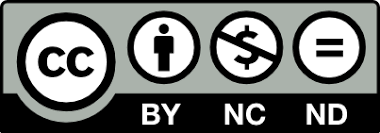Validity and reliability study of the irritability scale: ARI (Affective Reactivity Index) in a clinical population of Mexican adolescents
Published
How to Cite
Issue
Section
License
Copyright (c) 2024 Revista de Psiquiatría Infanto-Juvenil

This work is licensed under a Creative Commons Attribution-NonCommercial-NoDerivatives 4.0 International License.
DOI:
https://doi.org/10.31766/revpsij.v41n4a2Keywords:
Psychopathology, irritable mood, psychometrics, adolescent psychiatry, reproducibility of resultsAbstract
Introduction: Chronic irritability (CI) is a transdiagnostic construct. It has been studied through the Affective Reactivity Index (ARI) instrument, which is one of the most used and studied globally. Objectives: To determine internal consistency, construct validity, convergent validity and divergent validity, test-retest reliability, and inter-informant reliability, and establish the diagnostic test for both versions of the ARI scale. Materials and methods: Adolescents and their parents were assessed, they were interviewed with a semi-structured instrument (K-SADS-PL-5) and answered to different instruments for process validity. Contrasts with ?², correlations with Pearson r were used and diagnostic test values were obtained. Results: 83 adolescents and their parents were included. We found a Cronbach's alpha of 0.918 for ARI adolescents (ARI-A) and 0.904 for ARI parent/guardian (ARI-P). The principal components analysis determined a single factor explaining a variance of 79% in ARI-A and 75% in ARI-P. Test-retest reliability of 0.42-0.67 was found in ARI-A and 0.35-0.53 in ARI-P; interinformant reliability was significant K= 0.24, p=0.002. The areas under the curve were 0.640 for ARI-A and 0.753 for ARI-P. Conclusion: The ARI scale presents adequate validity and reliability in measuring CI in Mexican adolescents with psychopathology.
Downloads
References
Diagnostic and Statistical Manual of Mental Disorders. 5th ed. Arlington, Va.: American Psychiatric Association; 2013.
Toohey MJ, DiGiuseppe R. Defining and measuring irritability: Construct clarification and differentiation. Clinical Psychology Review. 2017;53: 93-108. https://doi.org/10.1016/j.cpr.2017.01.009 DOI: https://doi.org/10.1016/j.cpr.2017.01.009
Leibenluft E, Cohen P, Gorrindo T, Brook JS, Pine DS. Chronic Versus Episodic Irritability in Youth: A Community-Based, Longitudinal Study of Clinical and Diagnostic Associations. Journal of Child and Adolescent Psychopharmacology. 2006;16(4): 456-66. https://doi.org/10.1089/cap.2006.16.456 DOI: https://doi.org/10.1089/cap.2006.16.456
Evans SC, Burke JD, Roberts MC, Fite PJ, Lochman JE, autor, et al. Irritability in child and adolescent psychopathology: An integrative review for ICD-11. Clinical Psychology Review. 2017;53: 29-45. https://doi.org/10.1016/j.cpr.2017.01.004 DOI: https://doi.org/10.1016/j.cpr.2017.01.004
Krieger FV, Leibenluft E, Stringaris A, Polanczyk GV. Irritability in children and adolescents: past concepts, current debates, and future opportunities. Braz J Psychiatry. 2013;35(s1): S32-S39. https://doi.org/10.1590/1516-4446-2013-S107 DOI: https://doi.org/10.1590/1516-4446-2013-S107
Stringaris A, Cohen P, Pine DS, Leibenluft E. Adult Outcomes of Youth Irritability: A 20-Year Prospective Community-Based Study. AJP. 2009;166(9): 1048-54. https://doi.org/10.1176/appi.ajp.2009.08121849 DOI: https://doi.org/10.1176/appi.ajp.2009.08121849
Vidal-Ribas P, Stringaris A. How and Why Are Irritability and Depression Linked? Child and Adolescent Psychiatric Clinics of North America. 2021;30(2): 401-14. https://doi.org/10.1016/j.chc.2020.10.009 DOI: https://doi.org/10.1016/j.chc.2020.10.009
Stringaris A, Goodman R, Ferdinando S, Razdan V, Muhrer E, Leibenluft E, et al. The Affective Reactivity Index: a concise irritability scale for clinical and research settings. Journal of Child Psychology and Psychiatry. 2012;53(11): 1109-17. https://doi.org/10.1111/j.1469-7610.2012.02561.x DOI: https://doi.org/10.1111/j.1469-7610.2012.02561.x
American Psychiatric Association. DSM-5-TR Online Assessment Measures. En: American Psychiatric Association [Internet]. Disponible en: https://www.psychiatry.org:443/psychiatrists/practice/dsm/educational-resources/assessment-measures
Mulraney MA, Melvin GA, Tonge BJ. Psychometric properties of the Affective Reactivity Index in Australian adults and adolescents. Psychol Assess. 2014;26(1): 148-55. https://doi.org/10.1037/a0034891 DOI: https://doi.org/10.1037/a0034891
DeSousa DA, Stringaris A, Leibenluft E, Koller SH, Manfro GG, Salum GA. Cross-cultural adaptation and preliminary psychometric properties of the Affective Reactivity Index in Brazilian Youth: implications for DSM-5 measured irritability. Trends Psychiatry Psychother. 2013;35(3): 171-80. https://doi.org/10.1590/S2237-60892013000300004 DOI: https://doi.org/10.1590/S2237-60892013000300004
Pan P-Y, Yeh C-B. Irritability and Maladaptation Among Children: The Utility of Chinese Versions of the Affective Reactivity Index and Aberrant Behavior Checklist-Irritability Subscale. Journal of Child and Adolescent Psychopharmacology. 2019;29(3): 213-9. https://doi.org/10.1089/cap.2018.0070 DOI: https://doi.org/10.1089/cap.2018.0070
Grassi ML, Valente D, Berardi A, Tofani M, Galeoto G. Validation and Analysis of the Psychometric Properties of Two Irritability-Measuring Tools: The Affective Reactivity Index (ARI) and the Born-Steiner Irritability Scale (BSIS) in the Italian Adult and Adolescent Populations. International Journal of Environmental Research and Public Health. 2023;20(5): 4607. https://doi.org/10.3390/ijerph20054607 DOI: https://doi.org/10.3390/ijerph20054607
Ezpeleta L, Penelo E, De La Osa N, Navarro JB, Trepat E. How the Affective Reactivity Index (ARI) works for teachers as informants. Journal of Affective Disorders. 2020;261: 40-8. https://doi.org/10.1016/j.jad.2019.09.080 DOI: https://doi.org/10.1016/j.jad.2019.09.080
Evans SC, Abel MR, Doyle RL, Skov H, Harmon SL. Measurement and correlates of irritability in clinically referred youth: Further examination of the Affective Reactivity Index. Journal of Affective Disorders. 2021;283: 420-29. https://doi.org/10.1016/j.jad.2020.11.002 DOI: https://doi.org/10.1016/j.jad.2020.11.002
World Medical Association. World Medical Association Declaration of Helsinki: Ethical Principles for Medical Research Involving Human Subjects. JAMA. 2013;310(20): 2191-4. https://doi.org/10.1001/jama.2013.281053 DOI: https://doi.org/10.1001/jama.2013.281053
Ulloa RE, Ortiz S, Higuera F, Nogales I, Fresán A, Apiquian R, et al. Estudio de fiabilidad interevaluador de la versión en español de la entrevista Schedule for Affective Disorders and Schizophrenia for School-Age Children-Present and Lifetime version (K-SADS-PL). Actas Españolas de Psiquiatría. 2006;34(1): 36-40.
Shafer AB. Factor structure of the Brief Psychiatric Rating Scale for Children (BPRS-C) among Hospital Patients and Community Clients. Personality and Individual Differences. 2013;55(1): 41-6. https://doi.org/10.1016/j.paid.2013.01.024 DOI: https://doi.org/10.1016/j.paid.2013.01.024
Transatlantic-comppsych/Affective-Reactivity-Index. transatlantic-comppsych; 2022. Available: https://github.com/transatlantic-comppsych/Affective-Reactivity-Index
Mulraney M, Melvin G, Tonge B. Brief report: Can irritability act as a marker of psychopathology? Journal of Adolescence. 2014;37(4): 419-23. https://doi.org/10.1016/j.adolescence.2014.03.005 DOI: https://doi.org/10.1016/j.adolescence.2014.03.005
Dougherty LR, Galano MM, Chad-Friedman E, Olino TM, Bufferd SJ, Klein DN. Using Item Response Theory to Compare Irritability Measures in Early Adolescent and Childhood Samples. Assessment. 2021;28(3): 918-927. https://doi.org/10.1177/1073191120936363 DOI: https://doi.org/10.1177/1073191120936363
Lu B, Fang Y, Cai J, Chen Z. Psychometric Evaluation of the Affective Reactivity Index Among Children and Adolescents in China: A Multi-Method Assessment Approach. Assessment. 2023;31(5): 10731911231199424. https://doi.org/10.1177/10731911231199424 DOI: https://doi.org/10.1177/10731911231199424
Wilson MK, Cornacchio D, Brotman MA, Comer JS. Measuring Irritability in Early Childhood: A Psychometric Evaluation of the Affective Reactivity Index in a Clinical Sample of 3- to 8-Year-Old Children. Assessment. 2022;29(7): 1473–81. doi:10.1177/10731911211020078 DOI: https://doi.org/10.1177/10731911211020078
Sugaya LS, Kircanski K, Stringaris A, Polanczyk GV, Leibenluft E. Validation of an irritability measure in preschoolers in school-based and clinical Brazilian samples. Eur Child Adolesc Psychiatry. 2022;31: 577-87. doi:10.1007/s00787-020-01701-6 DOI: https://doi.org/10.1007/s00787-020-01701-6
Birleson P, Hudson I, Buchanan DG, Wolff S. Clinical Evaluation of a Self-Rating Scale for Depressive Disorder in Childhood (depression Self-Rating Scale). J Child Psychol & Psychiat. 1987;28(1): 43-60. https://doi.org/10.1111/j.1469-7610.1987.tb00651.x DOI: https://doi.org/10.1111/j.1469-7610.1987.tb00651.x
Lara Muñoz M, de la Peña Olvera F, Cortés J, Nicolini H, Páez F, Almeida L. Traducción al español y validez de la Escala de Birleson (DSRS) para el Trastorno Depresivo Mayor en la Adolescencia. Salud Mental. 1996;19(extra 3): 17-23.
Sánchez Quintana S, Ortiz León S, Autor, Higuera Romero FH. Validez y confiabilidad de la escala de ansiedad (SCARED) para niños y adolescentes en población abierta. Especialidad en Medicina (Psiquiatría Infantil y de la Adolescencia), Universidad Nacional Autónoma de México. 2004. Available: http://132.248.9.195/pdtestdf/0327421/Index.html
Birmaher B, Khetarpal S, Brent D, Cully M, Balach L, Kaufman J, et al. The Screen for Child Anxiety Related Emotional Disorders (SCARED): Scale Construction and Psychometric Characteristics. Journal of the American Academy of Child & Adolescent Psychiatry. 1997;36(4): 545-53. https://doi.org/10.1097/00004583-199704000-00018 DOI: https://doi.org/10.1097/00004583-199704000-00018
Grañana N, Richaudeau A, Gorriti CR, O’Flaherty M, Scotti ME, Sixto L, et al. Evaluación de déficit de atención con hiperactividad: la escala SNAP IV adaptada a la Argentina. Rev Panam Salud Publica. 2011;29(5): 344-9. https://doi.org/10.1590/S1020-49892011000500007 DOI: https://doi.org/10.1590/S1020-49892011000500007
Swanson JM, Kraemer HC, Hinshaw SP, Arnold LE, Conners CK, Abikoff HB, et al. Clinical Relevance of the Primary Findings of the MTA: Success Rates Based on Severity of ADHD and ODD Symptoms at the End of Treatment. J Am Acad Child Adolesc Psychiatry. 2001;40(2): 168-79. https://doi.org/10.1097/00004583-200102000-00011 DOI: https://doi.org/10.1097/00004583-200102000-00011
Bussing R, Fernandez M, Harwood M, Hou W, Garvan CW, Eyberg SM, et al. Parent and Teacher SNAP-IV Ratings of Attention Deficit Hyperactivity Disorder Symptoms: Psychometric Properties and Normative Ratings From a School District Sample. Assessment. 2008;15(3): 317-28. https://doi.org/10.1177/1073191107313888 DOI: https://doi.org/10.1177/1073191107313888
Hall CL, Guo B, Valentine AZ, Groom MJ, Daley D, Sayal K, et al. The Validity of the SNAP-IV in Children Displaying ADHD Symptoms. Assessment. 2020;27(6): 1258-71. https://doi.org/10.1177/1073191119842255 DOI: https://doi.org/10.1177/1073191119842255
Kaufman J, Birmaher B, Brent D, Rao U, Flynn C, Moreci P, et al. Schedule for Affective Disorders and Schizophrenia for School-Age Children-Present and Lifetime Version (K-SADS-PL): initial reliability and validity data. J Am Acad Child Adolesc Psychiatry. 1997;36(7): 980-8. https://doi.org/10.1097/00004583-199707000-00021 DOI: https://doi.org/10.1097/00004583-199707000-00021
De la Peña Olvera F, Villavicencio LR, Palacio JD, Félix FJ, Larraguibel M, Viola L, et al. Validity and reliability of the kiddie schedule for affective disorders and schizophrenia present and lifetime version DSM-5 (K-SADS-PL-5) Spanish version. BMC Psychiatry. 2018;18: 193. https://doi.org/10.1186/s12888-018-1773-0 DOI: https://doi.org/10.1186/s12888-018-1773-0
Lachar D, Randle SL, Harper RA, Scott-Gurnell KC, Lewis KR, Santos CW, et al. The Brief Psychiatric Rating Scale for Children (BPRS-C): Validity and Reliability of an Anchored Version. Journal of the American Academy of Child & Adolescent Psychiatry. 2001;40(3): 333-40. https://doi.org/10.1097/00004583-200103000-00013 DOI: https://doi.org/10.1097/00004583-200103000-00013
Cujiño Cano MF, Chaskel Heilbronner RE, Toledo Arenas JD. Validación de la versión en español de la Brief Psychiatric Rating Scale for Children para trastornos psiquiátricos en niños, en dos hospitales de Bogotá, colombia. Rev peru psiquiatr. 2010;1(2): 55-62.
De la Peña Olvera F, Palacios L, Ulloa R. Validity of Mexican Modified Children’s Brief Psychiatric Rating Scale (BPRS-C-25). 52 Annual Meeting of the American Academy of Child and Adolescent Psychiatry; 2005 Oct 18; Toronto, Canada.
Jolliffe IT, Cadima J. Principal component analysis: a review and recent developments. Philosophical Transactions of the Royal Society A: Mathematical, Physical and Engineering Sciences. 2016;374(2065): 20150202. https://doi.org/10.1098/rsta.2015.0202 DOI: https://doi.org/10.1098/rsta.2015.0202
Gniazdowski Z. Principal Component Analysis versus Factor Analysis. Zeszyty Naukowe WWSI. 2021;24(15): 35-88. https://doi.org/10.26348/znwwsi.24.35
Lochman JE, Evans SC, Burke JD, Roberts MC, Fite PJ, Reed GM, et al. An empirically based alternative to DSM-5’s disruptive mood dysregulation disorder for ICD-11. World Psychiatry. 2015;14(1): 30-3. https://doi.org/10.1002/wps.20176 DOI: https://doi.org/10.1002/wps.20176
Evans SC, Roberts MC, Keeley JW, Rebello TJ, Autor, Lochman JE, et al. Diagnostic classification of irritability and oppositionality in youth: a global field study comparing ICD?11 with ICD?10 and DSM?5. J Child Psychol Psychiatr. 2020;62(3): 13244. https://doi.org/10.1111/jcpp.13244 DOI: https://doi.org/10.1111/jcpp.13244
Johns-Mead R, Vijayakumar N, Mulraney M, Melvin G, Youssef G, Sciberras E, et al. Categorical and dimensional approaches to the developmental relationship between ADHD and irritability. Journal of Child Psychology and Psychiatry. 2023;64(10): 1422-31. https://doi.org/10.1111/jcpp.13818 DOI: https://doi.org/10.1111/jcpp.13818
Losiewicz OM, Metts AV, Zinbarg RE, Hammen C, Craske MG. Examining the indirect contributions of irritability and chronic interpersonal stress on symptoms of anxiety and depression in adolescents. Journal of Affective Disorders. 2023;329: 350-8. https://doi.org/10.1016/j.jad.2023.02.125 DOI: https://doi.org/10.1016/j.jad.2023.02.125
Dissanayake AS, Dupuis A, Arnold PD, Burton CL, Crosbie J, Schachar RJ, et al. Is irritability multidimensional: Psychometrics of The Irritability and Dysregulation of Emotion Scale (TIDES-13). Eur Child Adolesc Psychiatry. 2024;33: 2767-80. https://doi.org/10.1007/s00787-023-02350-1 DOI: https://doi.org/10.1007/s00787-023-02350-1
Stringaris A, Maughan B, Copeland WS, Costello EJ, Angold A. Irritable Mood as a Symptom of Depression in Youth: Prevalence, Developmental, and Clinical Correlates in the Great Smoky Mountains Study. Journal of the American Academy of Child & Adolescent Psychiatry. 2013;52(8): 831-40. https://doi.org/10.1016/j.jaac.2013.05.017 DOI: https://doi.org/10.1016/j.jaac.2013.05.017
Mallidi A, Meza-Cervera T, Kircanski K, Stringaris A, Brotman MA, Pine DS, et al. Robust caregiver-youth discrepancies in irritability ratings on the affective reactivity index: An investigation of its origins. J Affect Disord. 2023;332: 185-93. https://doi.org/10.1016/j.jad.2023.03.091 DOI: https://doi.org/10.1016/j.jad.2023.03.091









 © 2021 AEPNyA Todos los derechos reservados
© 2021 AEPNyA Todos los derechos reservados
